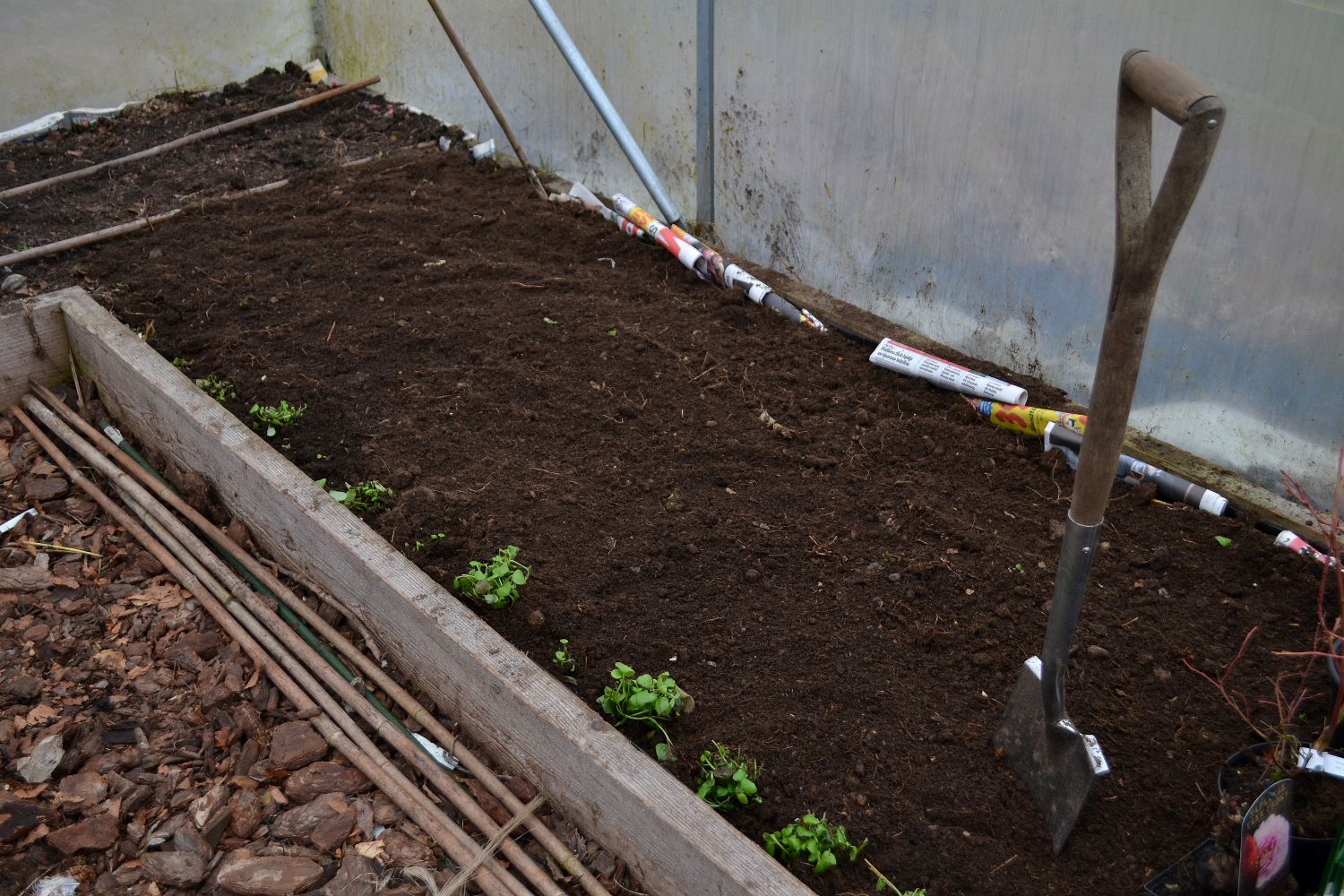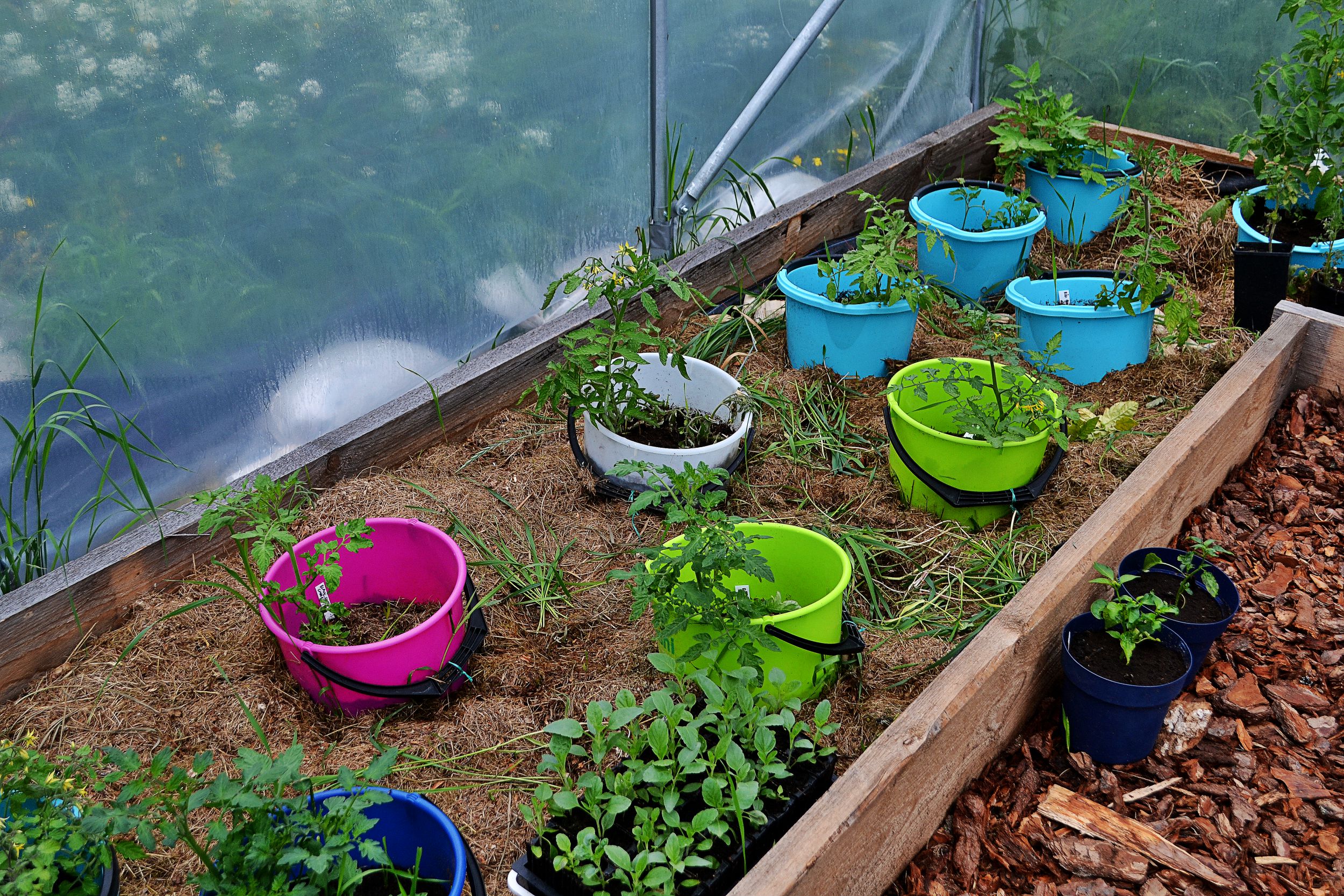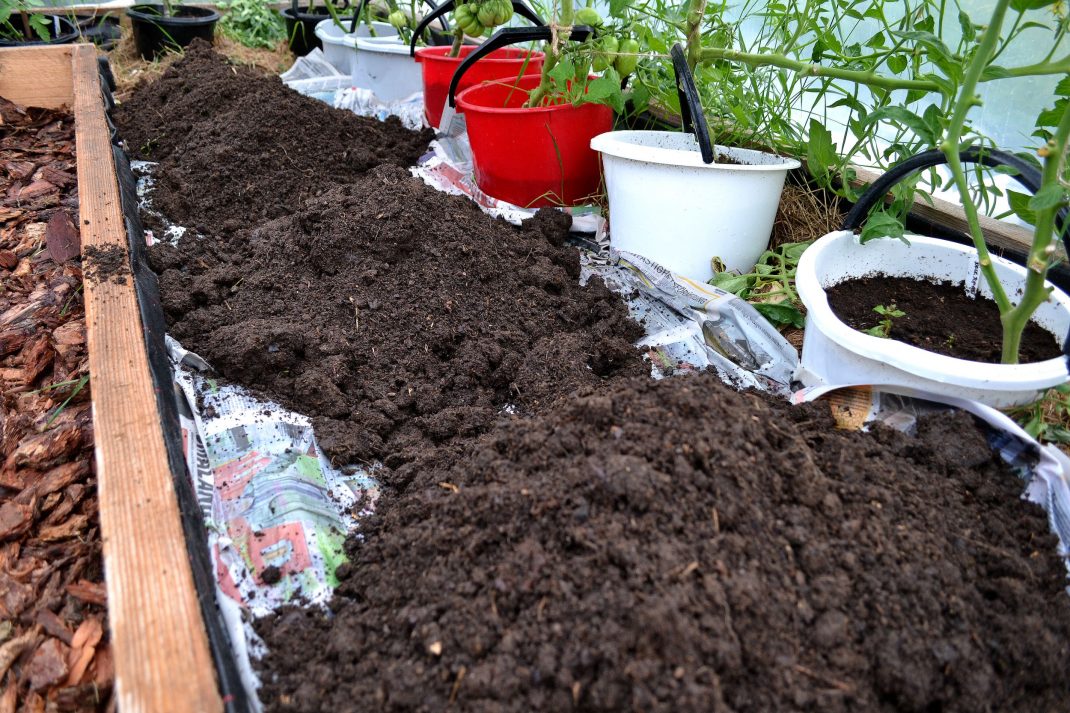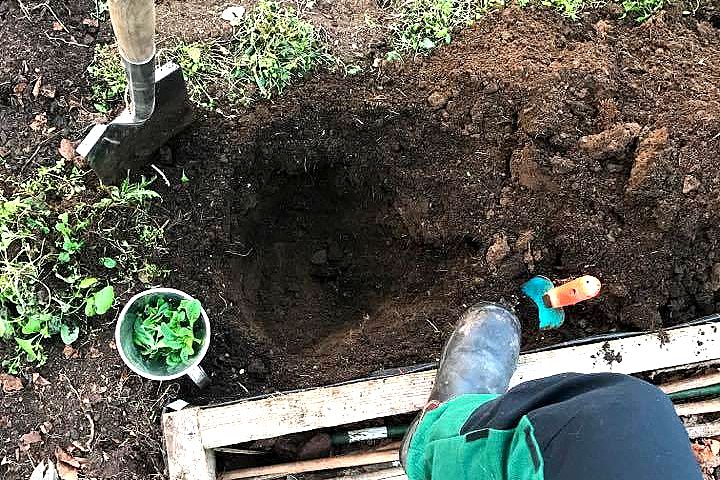How to get rid of couch grass
I managed to turn the most weed-ridden spot in my garden into a productive bed. Here are my best tips on how to get rid of couch grass in your garden.

One of the beds in the polytunnel, fertilized with bokashi compost.
The lower part of our garden has been a bit of a blind spot for us. I don't prioritize this particular space and as a result, plenty of weeds and couch grass grow here. We try to trim it down at least once every year. Mostly to make it look a little less messy. I just couldn't seem to find a purpose for this area.
But then the day when my polytunnel got delivered came. I had to decide where to put it and immediately dismissed this spot since the ground was uneven and full of couch grass. I couldn't possibly put it there, right? I was told that it was doable though, and that's when I decided to take up the fight against the couch grass.
I decided I wanted to create actual beds in my polytunnel and that's the reason I was a bit hesitant about putting my polytunnel in a spot with so many weeds. But, I realized that I could always grow my vegetables in troughs and buckets if all else failed.
Read more: Get the smart garden tool belt SARA here!

I covered my beds with a first layer of newspapers and silage and removed the couch grass as soon as I could of course.

I put soil over the wet newspapers covering the couch grass in the bed. This is the same bed as in the top picture, only two years earlier.
Getting rid of couch grass
We put the polytunnel up in May 2015 and started by covering the ground with a black weed mat (landscape fabric.)
We continued by building wooden frames and then I cut the weed mat to get access to the soil. Hello there weeds!
After that, I covered the ground with newspapers (with non-toxic ink) and plenty of organic materials like for example silage, leaves and grass clippings. You can see what the soil looked like before I covered it in the clip below:
I did the same thing for all of the beds in my polytunnel. The couch grass started growing in many spots the first year. But I didn't feel very stressed about it since I have done this before. So, I pulled the weeds with a positive attitude.
All the beds were covered again in late summer, I put a new layer of newspapers and plant parts on top of the old one. Some of these beds were going to be used in winter and I put a layer of soil (from other parts of the garden) on top.
Try digging!
The turf underneath the first layer of mulch was hard as a rock for a long time. It took a while before I was able to use support sticks for my plants. I kept feeding my beds with newspapers, soil, compost and plant parts throughout the entire summer.
Covering the ground like this actually smothers the weeds. It's very effective if done the right way. The trick is to put a thick layer of newspapers or cardboard (preferably wet so they really stick) closest to the ground. This layer will prevent light, air, and nutrients from reaching the weeds. After that, you simply add the other material on top. The turf will start to decompose and the material on top will become compost. At some point, the layers will blend. The earthworms will have worked on them and helped mix the layers well. It's such an amazing process!
I regularly bury compost to fertilize the soil in my polytunnel:
Nutrients
Being able to dig in my polytunnel feels great! It's been difficult at times though with all of that couch grass. Sometimes, I have even had issues getting the shovel in the ground. I'm so happy now though, I recently buried another bucket of bokashi compost and was able to dig a sizeable hole without any issues. The soil is amazing and I'm almost touched by how great it all worked out.
But what about the couch grass, is it completely gone now? Oh no. It still finds it's way into some of my beds, but since I have garden fabric and woodchips surrounding the outside of my polytunnel too, I think that they will disappear completely with time. I try to speed the process along by digging around the outer edges of the beds now and then. This is an easy way to get rid of them. They grow around 4-8 inches down and they are very easy to remove in the soft soil.

Being able to dig this deep in a previously weed-ridden spot is pure bliss!
Summary and tips
- Cover the ground with a thick layer of newspapers or cardboard. Don't trim the grass before you put the newspapers down since cut grass might push through the paper. You can soak the newspapers or cardboard before you put them down, this will help the layer stick to the ground.
- Cover the layer of paper with leaves, silage, grass clippings, manure or some other type of mulch.
- Put more newspapers and plant material on top if the weeds start to grow. The weeds will disappear sooner or later.
- You could possibly also cover the bed with soil that you can sow or plant in. Just know that you might need to keep working on the surface as you go so don't plant perennials yet.
If you find yourself looking at a space in your garden that's just filled with weeds, don't give up and make sure to use it! Focus on covering the ground, start small so that it doesn't get overwhelming and go from there. I keep doing more all the time, I just can't help it! And it feels great to not let the weeds ruin my gardening dreams.
Read more about my polytunnels: Sara's Kitchen Garden - Polytunnels
I hope that this post will help you believe that it's possible to get rid of even the most stubborn of weeds, like couch grass. Have you tried it and in that case, how did it go? Let me know!
/Sara Bäckmo



Leave a Reply
You must be logged in to post a comment.